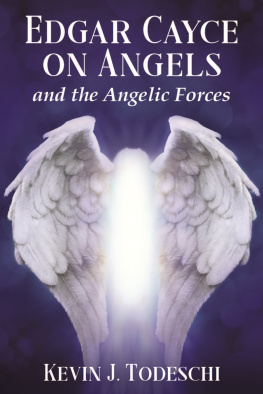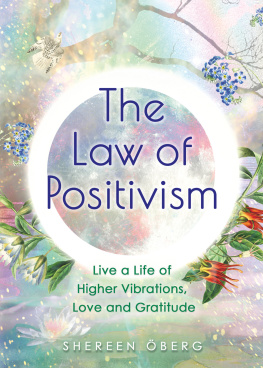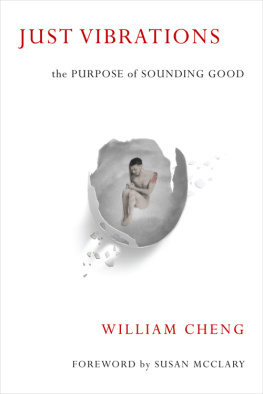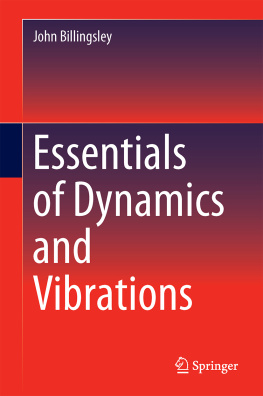Kevin J. Todeschi - Edgar Cayce on Vibrations: Spirits in Motion
Here you can read online Kevin J. Todeschi - Edgar Cayce on Vibrations: Spirits in Motion full text of the book (entire story) in english for free. Download pdf and epub, get meaning, cover and reviews about this ebook. year: 2007, publisher: A.R.E. Press, genre: Religion. Description of the work, (preface) as well as reviews are available. Best literature library LitArk.com created for fans of good reading and offers a wide selection of genres:
Romance novel
Science fiction
Adventure
Detective
Science
History
Home and family
Prose
Art
Politics
Computer
Non-fiction
Religion
Business
Children
Humor
Choose a favorite category and find really read worthwhile books. Enjoy immersion in the world of imagination, feel the emotions of the characters or learn something new for yourself, make an fascinating discovery.

- Book:Edgar Cayce on Vibrations: Spirits in Motion
- Author:
- Publisher:A.R.E. Press
- Genre:
- Year:2007
- Rating:3 / 5
- Favourites:Add to favourites
- Your mark:
- 60
- 1
- 2
- 3
- 4
- 5
Edgar Cayce on Vibrations: Spirits in Motion: summary, description and annotation
We offer to read an annotation, description, summary or preface (depends on what the author of the book "Edgar Cayce on Vibrations: Spirits in Motion" wrote himself). If you haven't found the necessary information about the book — write in the comments, we will try to find it.
Edgar Cayce on Vibrations: Spirits in Motion — read online for free the complete book (whole text) full work
Below is the text of the book, divided by pages. System saving the place of the last page read, allows you to conveniently read the book "Edgar Cayce on Vibrations: Spirits in Motion" online for free, without having to search again every time where you left off. Put a bookmark, and you can go to the page where you finished reading at any time.
Font size:
Interval:
Bookmark:
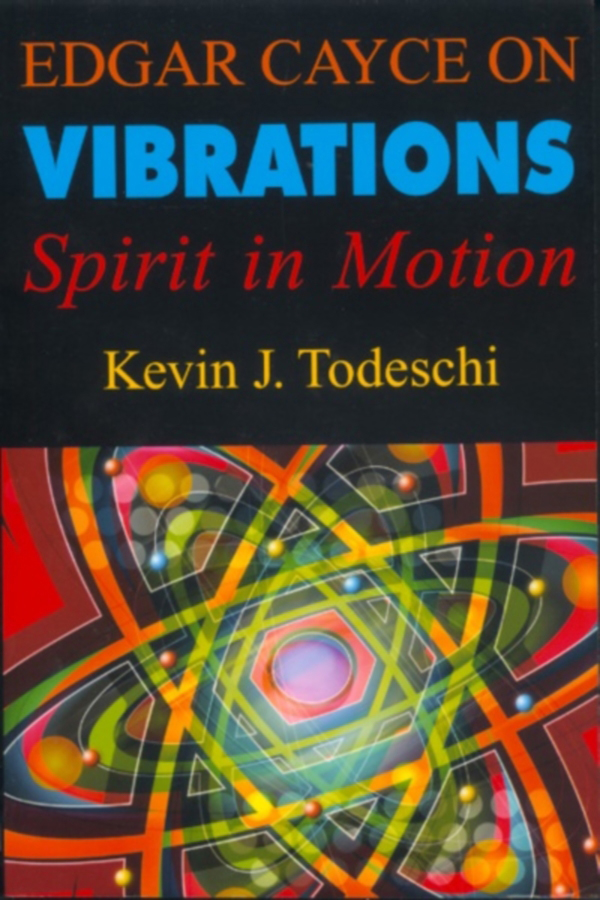
EDGAR CAYCE ON
VIBRATIONS
Selected Books by Kevin J. Todeschi
Dream Images and Symbols
Dream Interpretation (and More) Made Easy
Edgar Cayce on the Akashic Records
Edgar Cayce on Soul Growth
Edgar Cayce on Soul Mates
Edgar Cayces Twelve Lessons in Personal Spirituality
Family Karma
One Womans Century
Soul Signs
VIBRATIONS
Spirit in Motion
By
Kevin J. Todeschi

Copyright 2007
by Kevin J. Todeschi
6th Printing, February 2012
Printed in the U.S.A.
All rights reserved. No part of this book may be reproduced or transmitted in any form or by any means, electronic or mechanical, including photocopying, recording, or by any information storage and retrieval system, without permission in writing from the publisher.
A.R.E. Press
215 67th Street
Virginia Beach, VA 23451-2061
Library of Congress Cataloging-in-Publication Data
Todeschi, Kevin J.
Edgar Cayce on vibrations : spirit in motion / by Kevin J. Todeschi.
p. cm.
Includes bibliographical references.
ISBN 13: 978-0-87604-567-1 (trade pbk.)
1. Cayce, Edgar, 1877-1945. 2. VibrationMiscellanea. I. Title.
BF1999.T57 2007
133.8092dc22
2007014013
Cover design by Richard Boyle
Edgar Cayce Readings 1971, 1993-2007
by the Edgar Cayce Foundation.
All rights reserved.
Life in its manifestation is vibration.
Edgar Cayce
Everything is vibration. Everything is in motion. In spite of how the physical world may appear to the naked eye, science has proven that all of materialityconsisting of atoms and therefore protons, neutrons, and electronsis in motion.
Most of us can probably understand how vibrations might be compared to the ripples that occur when a stone is dropped in a pool of water. The truth, however, is that vibrations are much, much more. Light, for example, is a vibration. The eye is essentially a mechanical device that transforms light waves into electrical impulses which travel to the brain, where they are translated into images that give the perception of sight. Similarly, sound is a vibration. The ear, too, is a mechanical device that transforms the vibration of sound into electrical impulses. These impulses further travel through the nerves into the brain. Likewise, the senses of taste and smell entail extracting vibrations and ultimately transforming those vibrations into impulses that are deciphered by the brain. Information from the senses is relayed or transported as energy from one point to another in the form of waves.
Twentieth-century experiments in physics gave rise to the wave-particle duality, which is simply that light waves of energy in some experiments behave like particles, and particles of matter in some experiments behave like waves of energy. Therefore, quantum theory contends that all matter is in motion because particles of matter fundamentally behave as a wave, and waves are essentially vibrations that repeat continuously. Everything is vibration.
The importance that vibration plays in our lives cannot be underestimated. According to R.E.D. Bishop, a distinguished professor of mechanical engineering and fellow of the University College London, vibration is all about us:
After all, our hearts beat, our lungs oscillate, we shiver when we are cold, we sometimes snore, we can hear and speak because our eardrums and our larynges vibrate. The light waves which permit us to see entail vibration. We move by oscillating our legs. We cannot even say vibration properly without the tip of the tongue oscillating. And the matter does not end therefar from it. Even the atoms of which we are constituted vibrate. It is not exaggeration to say that it is unlikely that there is any branch of science in which this phenomenon does not play an important role.
Bishop, pg. 1
It was the Greeks who first theorized the concept of atoms as the building blocks of all matter, believing that different forms of matter were made up of different types and shapes of atoms. The word atom comes from the Greek word atomos, which means indivisible. The Greek philosopher Democritus (ca. fifth century BC) contended that if any form of matter were repeatedly subdivided, eventually a point would be reached whereby that matter could no longer be dividedthat point would be an atom. His theory of atomism hypothesized that nothing existed but these different kinds, shapes, and sizes of atoms and the void in which they moved (Jewish Encyclopedia, pg. 274). These atoms moved because of their vibrations and velocities, impacting with other atoms and creating and destroying various forms of matter in the process.
Later, the Greek philosopher Plato (ca. 427-347 BC) theorized that humanitys perception of the world was essentially a shadow of true reality. In Book VII of The Republic, Plato describes a world in which men are imprisoned by chains attached to their legs and necksunable to move or to see anything but the movement of shadows cast on the wall of the cave before their eyes. In this world of chains the prisoners only see the reflections cast by the shadows of reality behind them. This concept of only being able to see a shadow of true reality is relevant to the topic of vibrations in that our senses provide us with a perception of the material world that is essentially a shadow of the truth. We think we perceive reality, when in reality, we perceive the effects of the vibrations we encounter rather than being able to perceive those vibrations directly.
In spite of our inability to perceive vibrations firsthand, the concept of vibrations has nonetheless become a part of mainstream culture. For example, the 1960s pop song Good Vibrations by Brian Wilson of the Beach Boys describes how people put off vibrations through their emotions. That concept has further expanded so that today the idea that certain people possess good vibes while others put off bad vibes has become a part of everyday language.
The possibility that individuals could actually put off good vibes or bad vibes and have an effect on the material world moved beyond anecdotal accounts and stories into the realm of science with the publication of Masaru Emotos international bestseller The Messages of Water in 1999. Emotos work demonstrated that the vibration of the environment or the vibration of an individual in the environment has an influence upon the molecular shape of water crystals. Although some might not be surprised to learn that this vibration can come from music and spoken words, Emoto found evidence that water was also influenced by the vibrations of thought, the written word, and even pictures and images. Everything has a vibration and that vibration has been shown to have an effect upon the formation of water crystals. His research has recorded the effect of various types of music upon water crystals, the spoken word in a variety of languages, even the vibrations of thoughts and the written word, which he describes here:
We next thought about what would happen if we wrote words or phrases like Thank you and Fool on pieces of paper, and wrapped the paper around the bottles of water with the words facing in. It didnt seem logical for water to read the writing, understand the meaning, and change its form accordingly. But... the results of the experiments didnt disappoint us. Water exposed to Thank you formed beautiful hexagonal crystals, but water exposed to the word Fool produced crystals similar to the water exposed to heavy-metal music, malformed and fragmented.
Font size:
Interval:
Bookmark:
Similar books «Edgar Cayce on Vibrations: Spirits in Motion»
Look at similar books to Edgar Cayce on Vibrations: Spirits in Motion. We have selected literature similar in name and meaning in the hope of providing readers with more options to find new, interesting, not yet read works.
Discussion, reviews of the book Edgar Cayce on Vibrations: Spirits in Motion and just readers' own opinions. Leave your comments, write what you think about the work, its meaning or the main characters. Specify what exactly you liked and what you didn't like, and why you think so.

